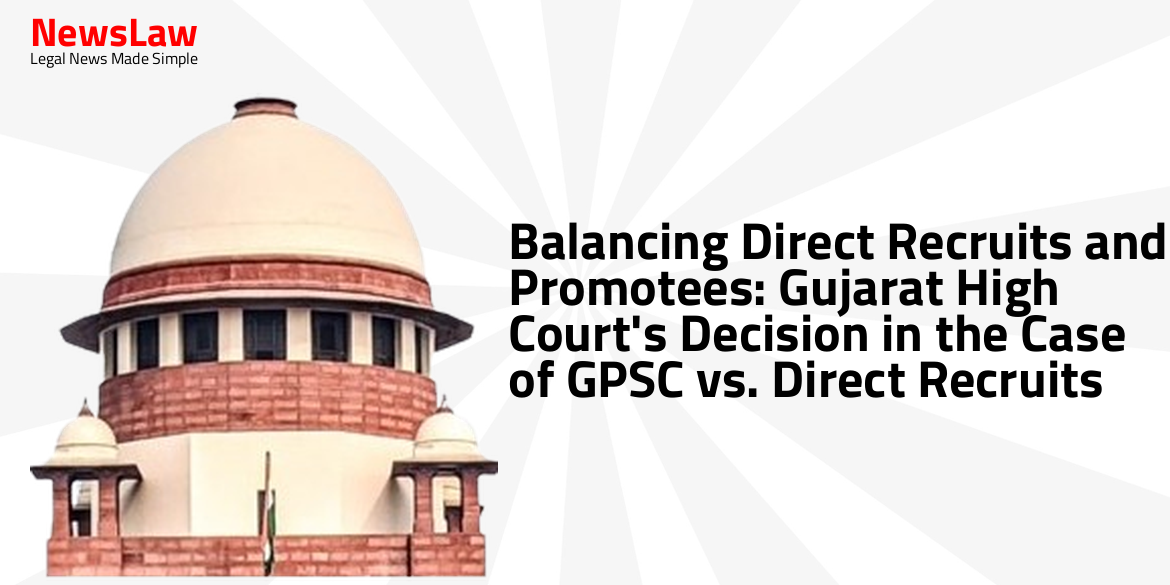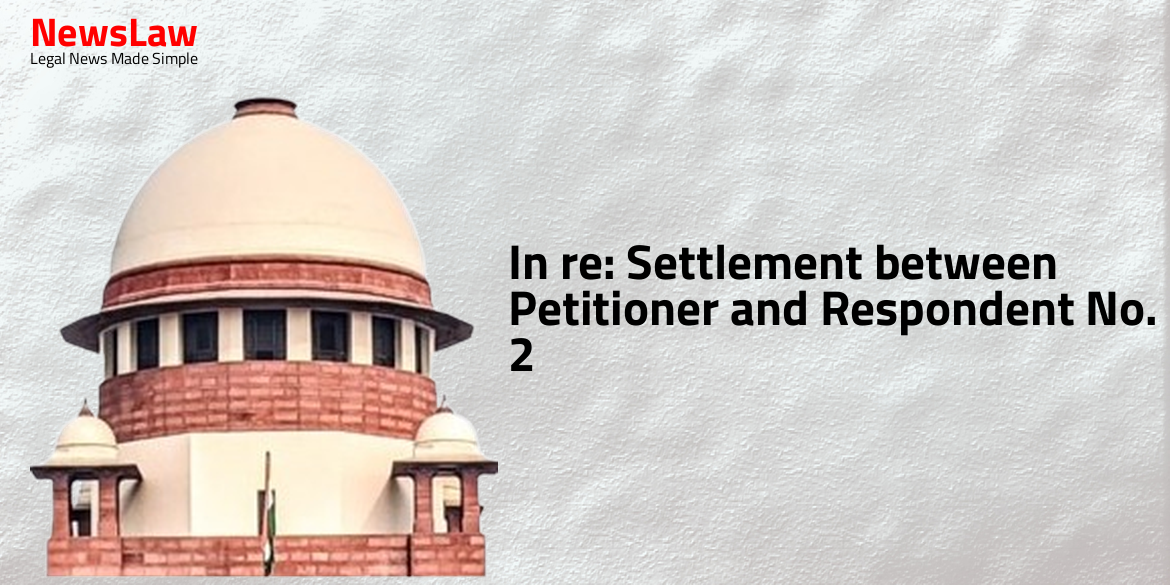In a landmark ruling, the Gujarat High Court addressed the issue of imbalance in recruitment practices for Executive Engineer and Deputy Engineer posts in the case of GPSC vs. Direct Recruits. The petitioners sought to challenge the lack of competitive exams before 1980, impacting their chances of selection. Stay tuned to learn more about how the court navigated this complex issue.
Facts
- Petitioner No.1 completed B.E. (Civil) Examination in 1978, Petitioner No.2 in 1979.
- No competitive examination held by GPSC for direct recruitment from 1968 to 1980.
- In 1980, competitive exams were held for filling 22 posts of Executive Engineers and 104 posts of Deputy Engineers.
- Petitioners participated in the exams and got selected as Deputy Engineers.
- Due to wrongly computed vacancies, petitioners couldn’t be considered for direct recruitment as Executive Engineers.
- Promotions in excess of quota made in both cadres due to lack of competitive exams.
- The petition calls for considering petitioners as directly recruited Executive Engineers and Deputy Engineers.
- Petitioners seek distribution of ‘carry forward’ vacancies for direct recruitment from 1960 to 1978.
- Request to push down invalid appointees and make necessary changes in records for all consequential benefits.
Arguments
- Petitioners claim that there has been a consistent imbalance in the ratio between direct recruits and promotees in filling vacancies for Executive Engineer and Deputy Engineer posts since the bifurcation of Gujarat State.
- They argue that promotions were made at the cost of direct recruits, creating a shortfall in direct recruitees in both Class-I and Class-II cadres.
- The ‘push down’ theory, established by the Apex Court, was not fully implemented by the respondents, leading to a significant shortage of direct recruits for the mentioned posts.
- Petitioners approached the Court in 1991, approximately 11-12 years after their selection, and the competitive examinations for the posts were conducted in 1980.
- A new seniority list was issued in 2008 applying the ‘push down’ theory, but petitioners claim that a cut-off date of 01.04.1979 was unjustly applied, neglecting vacancies between 1960-1980 and impacting their chances of selection for Executive Engineer posts.
Analysis
- The petitioners were appointed after the year 1980 and therefore were not eligible to be included in seniority lists dating up to 31.03.1979, as per the ‘push down’ theory.
- The petitioners’ contention of being deprived of earlier appointments due to lack of competitive examinations before 1980 is dismissed as misconceived.
- The Recruitment Rules in effect since 1979, including the proviso to Rule 3 and Rule 12, cannot be challenged after over 10 years of their implementation.
- The department’s decision to apply the ‘push down’ theory until 01.04.1979, due to the establishment of Narmada Water Resources, Water Supply and Kalpsar Department, is upheld.
- The petitioners, appointed under the Direct Recruitment Rules in 1979 and later, cannot claim benefits of the ‘push down’ theory for seniority list placements before their appointment dates.
- The petitioners’ lack of qualification before 1978-79 for the posts disallows their inclusion in seniority lists by pushing down those appointed before 01.04.1979.
- The petitioners have no legitimate right to claim earlier appointments when they were not even eligible to participate in competitive examinations for the posts before 1978-79.
- The seniority lists were prepared based on ‘Rota-Quota’ theory rather than ‘push down’ theory as per the petitioners’ own submission.
- The department’s consideration of 01.04.1979 as the cut-off date for ‘push down’ theory is supported by the establishment of Narmada Water Resources, Water Supply and Kalpsar Department at that time.
Case Title: G G SHAIKH Vs. STATE OF GUJARAT
Case Number: R/SCA/6553/1991



